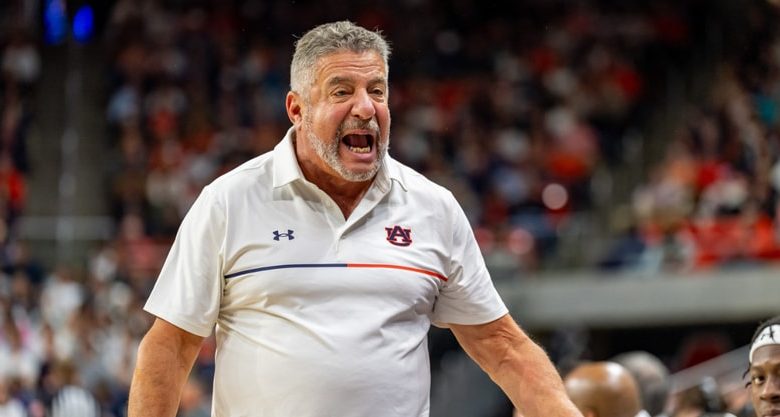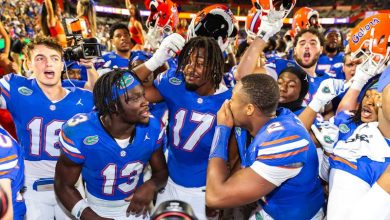Bruce Pearl’s Controversial Big Ten and SEC Football Take

Bruce Pearl’s Controversial Big Ten and SEC Football Take: A Deep Dive
Bruce Pearl, the charismatic head coach of the Auburn University basketball team, is no stranger to controversy. Known for his bold personality, animated sideline presence, and unapologetic approach to coaching, Pearl often finds himself in the media spotlight. However, his recent comments on the Big Ten and Southeastern Conference (SEC) football programs have stirred up quite the conversation across college football circles. Pearl, who has long been associated with SEC basketball, made a bold and controversial claim that has left both fans and analysts scratching their heads.
In his comments, Pearl shared his opinion on the long-standing rivalry between the Big Ten and SEC, specifically when it comes to their football programs. For years, the SEC has been regarded as the premier football conference in the country, with powerhouse teams like Alabama, Georgia, LSU, and Auburn regularly competing for national championships. On the other hand, the Big Ten has been known for its traditional blue-blood programs such as Ohio State, Michigan, and Penn State, with a style of play that differs from the fast-paced, high-scoring nature of the SEC.
What made Bruce Pearl’s take so controversial was his suggestion that, in terms of football, the SEC may not necessarily be the superior conference, and that the Big Ten’s physical style of play could be more successful in the long run. This statement sent shockwaves through the sports world, considering the SEC’s dominance in college football over the past two decades. To fully understand why Pearl’s comments were so contentious, let’s first explore the historical context of both conferences and the inherent rivalry between them.
The SEC’s Dominance in College Football
The Southeastern Conference (SEC) has long been regarded as the gold standard of college football. Historically, the conference has produced some of the most dominant teams in the sport, with a reputation for physicality, speed, and high-scoring offenses. Over the last two decades, the SEC has been the home of numerous national championships, including Alabama’s six titles since 2009, LSU’s victory in 2007, and Florida’s championships in 2006 and 2008. The conference is home to teams that have consistently been in the hunt for the College Football Playoff (CFP) and, before its creation, the BCS National Championship.
The SEC has built its reputation through its dominance in the recruiting process, consistently attracting top talent from across the country. Programs like Alabama, Georgia, and LSU have maintained a high level of success by landing elite recruits and developing them into NFL-caliber players. The conference’s brutal schedule, combined with its fierce competition, has made it a breeding ground for future NFL stars.
Moreover, the SEC’s style of play has set the tone for what many consider the ideal way to win in college football. Teams in the SEC have built their identities around stout defenses, explosive running games, and powerful offensive lines. The conference’s physical nature, with punishing hits and hard-nosed football, is often viewed as the standard for success at the highest levels.
The Big Ten’s Identity and Football Style
On the other hand, the Big Ten Conference has traditionally been a competitor in its own right, though its style of play differs from that of the SEC. Historically, the Big Ten has emphasized a more balanced, often slower-paced game focused on power football and trench warfare. Teams like Ohio State, Michigan, and Penn State are often seen as the traditional juggernauts of the Big Ten, regularly fielding powerful defenses and imposing offensive lines.
Despite the Big Ten’s rich football history, it hasn’t enjoyed the same level of recent dominance as the SEC. For example, Ohio State has been the conference’s most successful program over the last decade, but it has struggled to replicate the SEC’s sustained success in the postseason. When comparing the two conferences, the SEC has been far more successful in the College Football Playoff era, with Alabama, LSU, and Georgia consistently representing the SEC in the national championship picture.
Still, the Big Ten has not been without its moments of success. Ohio State won the national championship in 2014, defeating Oregon in the title game. Michigan, though in the midst of a long rebuilding period, has remained competitive under head coach Jim Harbaugh. Penn State, under James Franklin, has also been a team on the rise, showing that the Big Ten still has plenty to offer when it comes to elite football programs.
Moreover, the Big Ten is often viewed as a more traditional, hard-hitting conference. Programs in the Big Ten tend to emphasize a more balanced approach to football, mixing the run and pass in a way that doesn’t always prioritize the high-flying, fast-paced offenses that have become synonymous with the SEC. The physicality and grit that the Big Ten teams bring to the table have earned them respect in the football world, even if their results on the national stage have sometimes been less frequent.
Bruce Pearl’s Controversial Take
When Bruce Pearl made his controversial comments about the Big Ten and SEC football programs, it was clear that he was stepping into unfamiliar territory. As a basketball coach in the SEC, his remarks were seen by many as a challenge to the SEC’s dominance in football, a sport where the conference has long been untouchable.
Pearl suggested that the Big Ten’s more physical, conservative style of football might actually be better suited for success in the current college football landscape. He argued that while the SEC’s high-flying, offensive-minded game has been successful, the Big Ten’s style could eventually lead to more sustained success in the long run. “The SEC has been great, no doubt,” Pearl said in an interview. “But you’ve got to look at the Big Ten’s toughness, the way they control the line of scrimmage, the way they impose their will. That’s the type of football that wins championships.”
Pearl also pointed out that, while the SEC has been dominant recently, there are concerns about how long the conference can maintain that level of success. With the rise of more dynamic, pass-heavy offenses in college football, Pearl questioned whether the SEC’s traditional formula of power football would continue to reign supreme. “There’s no question the SEC has been dominant in the last decade,” he continued. “But when you look at the way the Big Ten plays, there’s a certain type of football that is timeless. The Big Ten can grind it out and win games the way football was meant to be played.”
Why Pearl’s Comments Are Controversial
Pearl’s comments were immediately met with backlash from SEC supporters, who were quick to defend the conference’s dominance. Many argued that the SEC’s recent success in the College Football Playoff, with multiple teams consistently competing for national titles, proves that its style of play is the most successful in the modern era. Alabama’s sustained excellence under Nick Saban, Georgia’s rise as a perennial contender, and LSU’s 2019 championship run were all cited as examples of why the SEC’s brand of football is the one to beat.
The controversy also centers around the broader debate about what constitutes “success” in college football. While the SEC’s dominance in terms of championships and top-tier NFL talent is undeniable, some critics argue that the Big Ten’s style of play—focused on physicality and a balanced offensive attack—might be better suited to the future of college football. With the advent of NIL (Name, Image, and Likeness) deals and the continued evolution of the sport, there is a belief among some that the Big Ten’s more traditional approach could prove more sustainable.
However, critics of Pearl’s take argue that the Big Ten’s struggles in big games, particularly in the postseason, are evidence that the conference’s style of play is outdated. In recent years, when the Big Ten has faced SEC teams in the postseason, the results have often been lopsided, with the SEC teams prevailing in many high-profile matchups. For example, the College Football Playoff semifinal between Alabama and Ohio State in 2021, which Alabama won handily, was seen by many as further evidence that the SEC’s fast-paced, high-scoring style is the blueprint for success.
The Bigger Picture: Is Pearl Just Playing Devil’s Advocate?
Perhaps Bruce Pearl’s comments were more about playing devil’s advocate than making a definitive statement on the state of college football. As a coach in the SEC, Pearl’s role is to understand the nuances of the conference and its competitors, including the Big Ten. By raising the question of whether the Big Ten’s more physical approach could one day surpass the SEC’s high-scoring offenses, Pearl may have simply been trying to spark a larger conversation about the future of college football.
Whether or not his comments will change the discourse around the Big Ten and SEC is unclear, but it’s clear that Bruce Pearl’s take has put him in the center of a heated debate. In a sport as competitive and passionate as college football, comments like these are bound to generate intense reactions.









